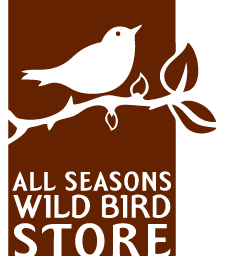 They swim gracefully (or feed ungracefully) in the water. They fly gracefully, in small to large V-formations. They honk or whistle. They are definitely swans, with their long necks and stout bodies. But of the two types of swans seen locally, either Trumpeter Swan or Tundra Swan, which is which?
They swim gracefully (or feed ungracefully) in the water. They fly gracefully, in small to large V-formations. They honk or whistle. They are definitely swans, with their long necks and stout bodies. But of the two types of swans seen locally, either Trumpeter Swan or Tundra Swan, which is which?
If each type of swan is side-by-side, distinguishing them is easy. Trumpeter Swans will always be the larger birds. But what if they are not side-by-side? Then look and listen!
Look in the summer and winter.
In this region, you will be seeing Trumpeter Swans. They nest here in the summer and move very little in winter migration, only needing open water with available vegetation to survive. Visit Mississippi Drive Park (aka Swan Park) near Monticello to see wintering swans; the warm power plant water provides the open water they need. Tundra Swans, however, spend their summers in the high Arctic and winters at Chesapeake Bay.
Listen and look in spring and fall.
Both species are flying and feeding during migration at these times. Both will fly in a V-formation, which can range from one (5 or so individuals) to multiple family groups (100+ individuals). Both will feed in groups, dabbling in lakes or rivers in search of food. Both will call when feeding or flying.
Trumpeters will give their characteristic HONK, usually a single note but sometimes up to three. When they are swimming, look at their face; the black color between the bill and eyes usually form a wide “cat’s-ears” shape. They almost never have yellow spots along with the black.
Tundras will give various whistles and hoots, which when given by multiple individuals, can sound like the battle scene of an old western movie. In fall, they can be seen regionally in large feeding groups, especially on the Mississippi River between Alma, Wisconsin and Lansing, Iowa, before continuing their southeastward migration. When they are swimming, look at their face; the black color between the bill and eyes usually form a narrow “snail’s antennas” shape, almost always with accompanying yellow spots.
Whichever variety of swan you encounter, enjoy these winged wonders immensely!
By Guest Contributor MARK NEWSTROM

